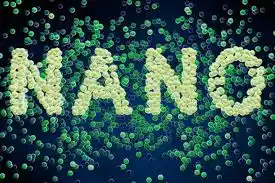افشین رشید
اُستادیار ؛ عضو هیات علمی دانشگاه آزاد اسلامی واحد علوم و تحقیقات تهران
588 یادداشت منتشر شدهInteresting Features of Nanoelectronics Technology (Structure and Applications)
Interesting Features of Nanoelectronics Technology (Structure and Applications)

Note: Nanoelectronics is the boundary between the world of atoms and molecules on the one hand and the macro world on the other. In nanotechnology, properties are controlled by the behavioral principles of atoms. Nanoscience is actually the greatest challenge of mankind, in which it is possible to control materials at the atomic scale.
Nanoscience is the study of phenomena and manipulation of materials at atomic, molecular, and macromolecular scales that result in (dramatic changes in the properties of materials) compared to materials at large scales. Nanoscience refers to phenomena that occur at specific scales and with very small probability. Bulk materials are large pieces of material; like what surrounds us (they have specific physical properties) and are continuous. In other words, their physical properties are known to us apart from their dimensions and do not change. Now, if we reduce a material, the properties of that material at (smaller and micrometric) dimensions, for example, the size of a grain of sand, are almost the same as the original lump, but when that material reaches much smaller dimensions and the size of nanometers, the properties of the material change in a way that the usual and classical laws of physics are no longer able to explain it. That material, for example, gold (at nanometer dimensions), may have properties, for example, electrical, optical, or mechanical properties, that are very different from its bulk size.

Now, with a basic understanding of the definition of nanoscience, we can also define the different and influential nanotechnology as follows: Nanoelectronics is the design, study, production, and application of structures, devices, and systems by controlling their shape and size at the nanometer scale.

Characteristics of dimensions and micrometric and nanometric scales in nanoelectronics science
What exactly do words like micrometer, nanometer, or nanoscale mean and what dimensions do they refer to? So let's take a closer look at the quantities being measured. Among the small sizes, the nanometer is of particular importance.
Note: Nanoscale is usually defined as a size of about 1 to 100 nanometers. A nanometer is a billion times smaller than a meter . A nanometer is roughly the size of 5 to 10 atoms stacked side by side.
Nanometer: Nanometer refers to a very small scale, measuring one billionth of a meter.
Micrometer: The need to produce parts with high precision required the design and manufacture of measuring instruments with an accuracy of more than 0.02 mm, which is why the micrometer caliper was designed. The micrometer or micrometer is made of various parts, which include: a fixed jaw, a movable jaw, a graduated cylinder or micrometer ruler, a graduated shell or micrometer vernier, and a bow that is used to hold the micrometer.